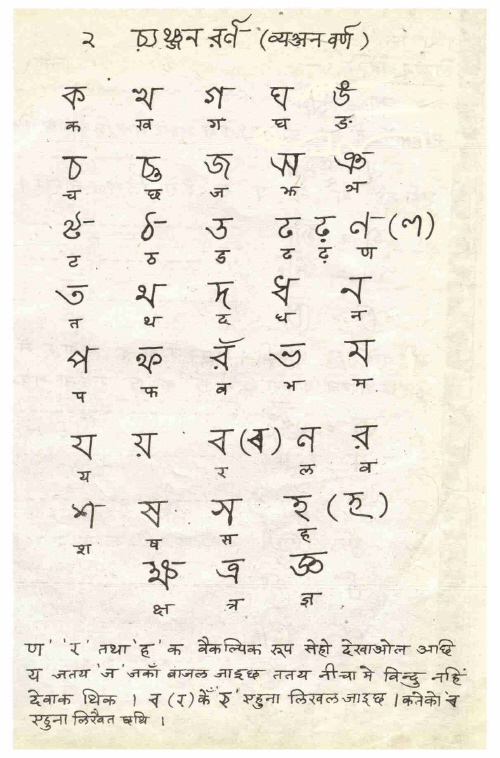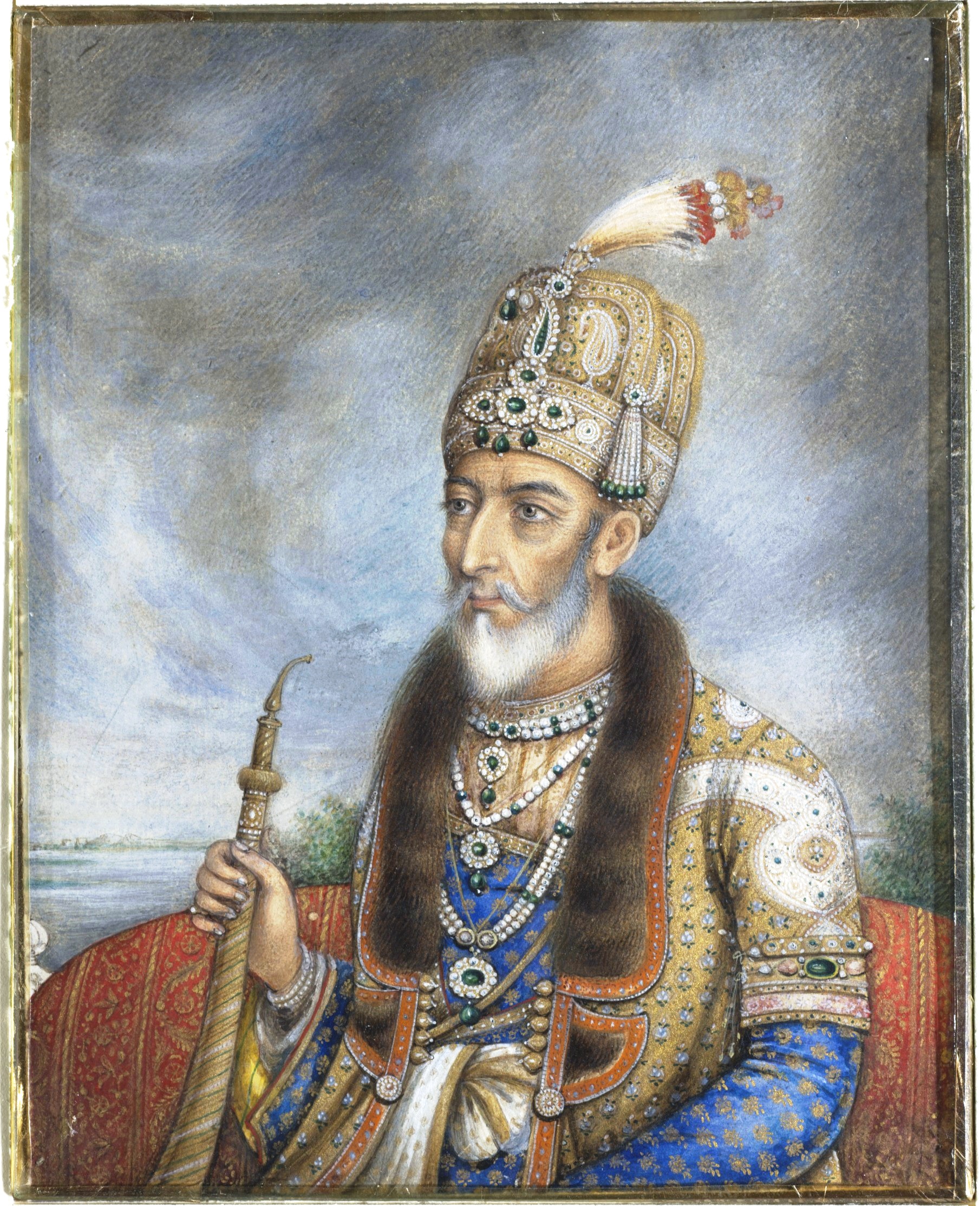|
Laxman Jha
Laxman Jha ( Maithili: लक्ष्मण झा) was a freedom fighter in the freedom movement of India from the Mithila region. He was also a pioneer activist in the separate Mithila state movement. Early life Laxman Jha was born on 5 September 1916 at Rasiari village of Darbhanga district in the Mithila region of Bihar. He was born in a Maithil Brahmin family. His father name was Kari Jha and mother was Kirti Devi. He completed his primary education in his own village. Later he was admitted in Madhepur High School. His passed his secondary school examination in 1937 AD with first class. He was admitted in T N J college at Bhagalpur for intermediate courses. In 1939, he passed intermediate examination. In 1941, he completed graduation education in Sanskrit honours from Patna College. He was awarded gold medal for his outstanding performance in the result of the examination. Indian Freedom Movement Laxman Jha started taking part in the freedom movement of India from ag ... [...More Info...] [...Related Items...] OR: [Wikipedia] [Google] [Baidu] |
Darbhanga District
Darbhanga district is one of the thirty-eight districts of Bihar States and territories of India, state in eastern India, and Darbhanga city is the administrative headquarters of this district and 5th largest city of Bihar as well. Darbhanga district lies in Historical Mithila region, Mithila region. Darbhanga district is a part of Darbhanga Division. The district is bounded on the north by Madhubani district, on the south by Samastipur district, on the east by Saharsa district and on the west by Sitamarhi district, Sitamarhi and Muzaffarpur district, Muzaffarpur districts. The district covers an area of . There are several locations related to the epic Ramayana. The Ahalya Sthan, Gautama Ashram, Gautam Ashram and Gautam Kund are major destinations for the Ramayana circuit in the district. History 1976 saw the creations of two districts from Darbhanga's territory: Madhubani district, Madhubani and Samastipur district, Samastipur. Block and circle # Darbhanga Assembly constitu ... [...More Info...] [...Related Items...] OR: [Wikipedia] [Google] [Baidu] |
Mithila State Movement
Mithila State Movement is a movement advocating a separate Mithila (proposed Indian state), Mithila state in India. This movement gained momentum in 1902 AD when George Abraham Grierson, Sir George Grierson, an official of the Presidencies and provinces of British India, British Indian government, prepared a map of Mithila state by conducting a language-based survey. In 1881 AD, the word Mithila (region), Mithila was added to the dictionary of the British India government. According to the founder, president Dr. Dhanakar Thakur of the International Maithili Council in the proposed Mithila state, 24 districts of Bihar and six districts of Jharkhand, a total of 30 districts, have been included, which has a population of about 70 million. At the same time, the area is 70 thousand square km. History In 1912, when a new Bihar province was separating from the Bengal Presidency, Bengal presidency, the people of Mithila (region), Mithila demanded a separate Mithila state based on Sir ... [...More Info...] [...Related Items...] OR: [Wikipedia] [Google] [Baidu] |
Maithili Language
Maithili ( , ) is an Indo-Aryan language spoken in parts of India and Nepal. It is native to the Mithila region, which encompasses parts of the eastern Indian states of Bihar and Jharkhand as well as Nepal's Koshi Province, Koshi and Madhesh Provinces. It is one of the 22 scheduled languages of India. It is the second most commonly spoken native languages of Nepal, Nepalese language constitutionally registered as one of the fourteen provincial official languages of Nepal. It is spoken by 21.7 million people. Of those, 3.2 million are Nepalis, Nepalese speakers. The language is predominantly written in Devanagari, but the historical Tirhuta script, Tirhuta and Kaithi scripts retained some use until today. Official status In 2003, Maithili was included in the 8th Schedule, Eighth Schedule of the Indian Constitution as a recognised language of India, Indian language, which allows it to be used in education, government, and other official contexts in India. The Maithili language i ... [...More Info...] [...Related Items...] OR: [Wikipedia] [Google] [Baidu] |
Mithila (region)
Mithila (), also known as Tirhut, Tirabhukti and Mithilanchal, is a geographical and cultural region of the Indian subcontinent bounded by the Mahananda River in the east, the Ganges in the south, the Gandaki River in the west and by the foothills of the Himalayas in the north. It comprises certain parts of Bihar and Jharkhand states of India and adjoining districts of the Koshi Province, Bagmati Pradesh and Madhesh Province of Nepal. The native language in Mithila is Maithili language, Maithili, and its speakers are referred to as Maithils. Mithila is commonly used to refer to the Videha Kingdom, as well as to the modern-day territories that fall within the ancient boundaries of Videha. Until the 20th century, Mithila was still ruled in part by the Raj Darbhanga. History In Jainism Mithilā is one of the most significant pilgrimage sites in Jainism. Apart from its association with ''Mahavira'', the 24th Tirthankara, it is also known for its association with ''Mallinatha'', ... [...More Info...] [...Related Items...] OR: [Wikipedia] [Google] [Baidu] |
Bihar
Bihar ( ) is a states and union territories of India, state in Eastern India. It is the list of states and union territories of India by population, second largest state by population, the List of states and union territories of India by area, 12th largest by area, and the List of Indian states and union territories by GDP, 14th largest by GDP in 2024. Bihar borders Uttar Pradesh to its west, Nepal to the north, the northern part of West Bengal to the east, and Jharkhand to the south. Bihar is split by the river Ganges, which flows from west to east. On 15 November 2000, a large chunk of southern Bihar was ceded to form the new state of Jharkhand. Around 11.27% of Bihar's population live in urban areas as per a 2020 report. Additionally, almost 58% of Bihari people, Biharis are below the age of 25, giving Bihar the highest proportion of young people of any Indian state. The official language is Hindi, which shares official status alongside that of Urdu. The main native languag ... [...More Info...] [...Related Items...] OR: [Wikipedia] [Google] [Baidu] |
Maithil Brahmin
Maithil Brahmins are the Indo-Aryan Hindu Brahmin community originating from the Mithila region and original inhabitants of Southern Nepal and bordering regions of India that comprises Madhesh Province & some areas of Koshi Province in Nepal and the Darbhanga, Kosi, Purnia, Munger, Bhagalpur, Santhal Pargana division in India and are also found in New Delhi and Kathmandu Valley. They are one of the five Pancha-Gauda Brahmin communities of Nepal and India. The main language spoken by Maithil Brahmins is Maithili, followed by Nepali and Hindi-Urdu language. History Some of the dynastic families of the Mithila region, such as the Malla dynasty (Nepal), Karnat dynasty (Nepal), Oiniwar Dynasty (India) and Khandwal Dynasty (Raj Darbhanga India), were Maithil Brahmins and were noted for their patronage of Maithil culture. In the 1960s and 1970s, the Maithil Brahmins became politically significant in Nepal and around India. Durgananda Jha (Nepal), Binodanand Jha and Lalit N ... [...More Info...] [...Related Items...] OR: [Wikipedia] [Google] [Baidu] |
Bhagalpur
Bhagalpur, historically known as Champapuri, Champa Nagari, is a city in the Indian state of Bihar, situated on the southern bank of the Ganges river. It is the Bihar#Government and administration, third largest city of Bihar by population and also serves the headquarters of Bhagalpur district, Bhagalpur division, and Bihar Police, Eastern Range. It is known as the Bhagalpuri silk, Silk City and also listed for development under the Smart Cities Mission by Government of India. It is the only district in Bihar after capital city Patna where three major higher educational institutions Indian Institute of Information Technology, Bhagalpur, IIIT Bhagalpur, Jawaharlal Nehru Medical College, Bhagalpur, Jawaharlal Nehru Medical College, Tilka Manjhi Bhagalpur University, TMBU, and Bihar Agricultural University, Agriculture University (BAU) are located and also Vikramshila, Vikramshila Central University is under construction next to the ruins of the medieval Vikramshila, Vikramshila Mah ... [...More Info...] [...Related Items...] OR: [Wikipedia] [Google] [Baidu] |
Sanskrit
Sanskrit (; stem form ; nominal singular , ,) is a classical language belonging to the Indo-Aryan languages, Indo-Aryan branch of the Indo-European languages. It arose in northwest South Asia after its predecessor languages had Trans-cultural diffusion, diffused there from the northwest in the late Bronze Age#South Asia, Bronze Age. Sanskrit is the sacred language of Hinduism, the language of classical Hindu philosophy, and of historical texts of Buddhism and Jainism. It was a lingua franca, link language in ancient and medieval South Asia, and upon transmission of Hindu and Buddhist culture to Southeast Asia, East Asia and Central Asia in the early medieval era, it became a language of religion and high culture, and of the political elites in some of these regions. As a result, Sanskrit had a lasting effect on the languages of South Asia, Southeast Asia and East Asia, especially in their formal and learned vocabularies. Sanskrit generally connotes several Indo-Aryan languages# ... [...More Info...] [...Related Items...] OR: [Wikipedia] [Google] [Baidu] |
Patna College
Patna College is a constituent state aided College of Patna University which was established in 1863 during the British Raj. It offers undergraduate and postgraduate courses in science, arts and commerce as well as some vocational courses like BBA, BMC and BCA. The college is affiliated to Patna University. It is also considered to be the oldest institution of higher education in Bihar. History Patna College is the oldest institution of higher education in Bihar. Nearly every major college of Patna- Patna Law College, Engineering College ( National Institute of Technology, Patna at present), Patna Science College and Vanijya Mahavidyala, has their roots from this college. Patna College was established on 9 January 1863, during the British Raj. After the split-up of old Patna University into Patna University and Bihar University on 2 January 1952, the institution saw a significant shift. Until January 1952, the college was a government college and it functioned as an in ... [...More Info...] [...Related Items...] OR: [Wikipedia] [Google] [Baidu] |
Indian Independence Movement
The Indian independence movement was a series of historic events in South Asia with the ultimate aim of ending British Raj, British colonial rule. It lasted until 1947, when the Indian Independence Act 1947 was passed. The first nationalistic movement took root in the newly formed Indian National Congress with prominent moderate leaders seeking the right to appear for Indian Civil Service examinations in British India, as well as more economic rights for natives. The first half of the 20th century saw a more radical approach towards self-rule. The stages of the independence struggle in the 1920s were characterised by the leadership of Mahatma Gandhi and Congress's adoption of Gandhi's policy of non-violence and Salt March, civil disobedience. Some of the leading followers of Gandhi's ideology were Jawaharlal Nehru, Vallabhbhai Patel, Abdul Ghaffar Khan, Maulana Azad, and others. Intellectuals such as Rabindranath Tagore, Subramania Bharati, and Bankim Chandra Chattopadhyay spr ... [...More Info...] [...Related Items...] OR: [Wikipedia] [Google] [Baidu] |
Simon Commission
The Indian Statutory Commission, also known as the Simon Commission, was a group of seven members of the British Parliament under the chairmanship of John Simon. The commission arrived in the Indian subcontinent in 1928 to study constitutional reform in British India. One of its members was Clement Attlee, who would later become the Prime Minister of the United Kingdom (1945 - 1951). Background The commission was constituted because at the time of introducing the Montagu–Chelmsford Reforms in 1919, the British Government had declared that a commission would be sent to India after ten years to examine the effects and operations of the constitutional reforms and to suggest further reforms. In November 1927, the British government appointed the Simon Commission two years ahead of schedule. The commission was strongly opposed by the Muslim League and the Indian National Congress, and prominent Indian leaders including Nehru, Gandhi, and Jinnah, because it contained only Briti ... [...More Info...] [...Related Items...] OR: [Wikipedia] [Google] [Baidu] |
Salt March
The Salt march, also known as the Salt Satyagraha, Dandi March, and the Dandi Satyagraha, was an act of Non violence, non violent civil disobedience in British Raj, colonial India, led by Mahatma Gandhi. The 24-day march lasted from 12 March 1930 to 6 April 1930 as a direct action campaign of tax resistance and Nonviolent resistance, nonviolent protest against the History of the salt tax in British India, British salt monopoly. Another reason for this march was that the Civil Disobedience Movement needed a strong inauguration that would inspire more people to follow Gandhi's example. Gandhi started this march with 78 of his trusted volunteers. The march spanned , from Sabarmati Ashram to Dandi, Navsari, Dandi, which was called Navsari at that time (now in the state of Gujarat). Growing numbers of Indians joined them along the way. When Gandhi broke the British Raj history of the salt tax in British India, salt laws at 8:30 am on 6 April 1930, it sparked large-scale acts of civil ... [...More Info...] [...Related Items...] OR: [Wikipedia] [Google] [Baidu] |








